We were recently informed by a friend of Gun Tests in the ammo-making business that .38 Special and .380 ACP ammunition are some of the best-selling types out there, so we decided to immediately give our readers a look at a few of the snubbies available in .38/.357. We secured a blued five-shot Taurus Model 605B2 ($391), and a stainless-steel six-shot Rossi Model R46202 ($377), and concentrated our testing on .38 Special ammo.
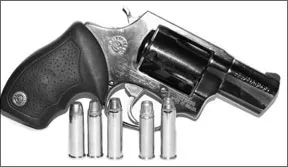
Though both guns were made in Brazil by Taurus, there were significant differences and, as we found, similar problems. The street prices of these two were within $40 of each other, so we chose to test blued five-shot against stainless six-shot. Of course both of these revolvers could be fired with .357 Magnum ammo, but we suspect most of these sold will seldom see a glimpse of the hot stuff, for various reasons. One reason is the cost of ammunition, and another is recoil and muzzle blast. Both are generally drastically increased, and sometimes to no good effect, with .357 fodder. Lets take a look at what we found.
Taurus 605B2 .357 Mag., $391
The Taurus Model 605 is also available (www.taurususa.com) in stainless as the 605SS2, but the price goes up to $439. While stainless might be important to you, we suspect the average home-protection-gun buyer will more than likely go for the cheaper gun and put the difference into ammo.
Our blued test gun was a very nicely finished and attractive little handgun, we thought. The polishing and bluing were very well done. The lockup was extremely tight, and the ejector rod worked smoothly. Everything about the Taurus looked and worked very well, we thought. The fixed sights were easily visible, gave a fine sight picture down the matted top surface of the frame, and as we
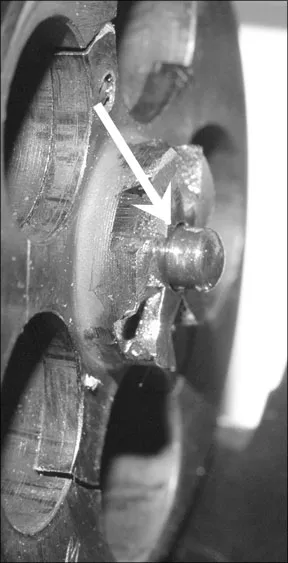
found, were right on the money with most loads tried. The textured rubber grips felt good, too. They did a better job of filling in behind the trigger guard, which helped keep it off our fingers with heavy-recoiling loads. They were narrower than those on the Rossi, yet felt better in our hands. They did a great job of taming even the toughest loads we tried. Lockup was exceptional. With the gun in the just-fired configuration, trigger fully back and hammer down, there was zero motion to the cylinder, and the gun stayed that way throughout all our test shooting. The gun held five shots, and those narrow grips made it easy to get the five rounds in or out.
The barrel appeared to have been inserted into the barrel shroud, and showed white at the front. The hammer and trigger were case hardened, the real thing. Both Taurus and Rossi featured the Taurus hammer-locking security system, but the Taurus had transfer-bar ignition. Its single-action trigger was outstanding, breaking at 3.8 pounds. The double-action pull was really exceptionally smooth, and broke at just under 11 pounds. The hammer didnt go back nearly as far on DA as on SA, but during our testing we had zero problems with ignition. We found the smooth DA pull to be very workable on the range.
We tested both guns with Independence brand .38 Special 130 grain FMJ flat-nose bullets, with Ultramax remanufactured 158-grain SWC lead-bullet ammunition, and with Federal 158-grain Hydra-Shok JHP .357 fodder. We also tried a few shots in both guns with Federal 180-grain Hi-Shok JHP, and with the outstanding Buffalo Bore .38 Special +P hollow-point Keith SWC cast bullets. Recoil with the 180-grain .357 (940 fps) was more manageable than that of the Federal 158-grain Hydra-Shok (1110 fps), and blast was less, too. We would probably choose the 180 over the 158 for those reasons. Buffalo Bores 158-grain Keith HP came out at 970 fps, mighty good for a .38 Special.
On the range we determined the Taurus could be relied on to put all its shots into less than 3 inches at 15 yards, and generally into less than 2 inches, with all loads tried. Best group was 1.2 inches for five shots, with the Ultramax 158-grain SWC, but many groups had three or even four shots touching.
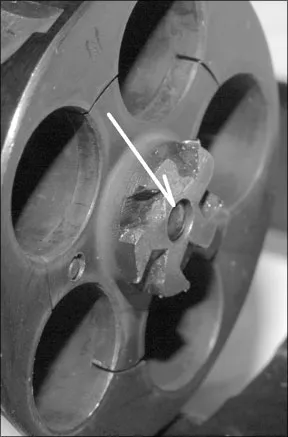
Best of all was the sighting of the gun. The two .38 Special loads landed just right for elevation and dead center for windage, exactly where the gun “looked.” The .357 loads, both 158 and 180 grain, and the hotter Buffalo Bore .38 loads landed 2 to 3 inches high, again right on line for windage. Recoil was not a problem with the .38 loads. The 158-grain lead load gave slightly greater kick. But recoil with the .357 loads were not for the novice, though we thought the beginner might be able to handle the less-recoiling and lower-blasting Buffalo Bore load, which has proven to be very effective. Clearly the owner of this gun will most likely do all his practicing with .38s and leave the hot stuff for serious purposes. The Taurus had one of the nicest DA pulls weve seen, and it went a long way to decided this test for us. Not one of our test crew wanted anything to do with fighting the heavy DA pull of the Rossi after trying the Taurus. Unfortunately thats not the whole story. We did have some trouble with this gun, and had the same trouble to a greater extent with the Rossi.
We had some problems with the Taurus with the hotter loads. The cylinder pin occasionally stuck in the forward position from recoil, rendering the gun useless. With the pin stuck forward the cylinder would not stay closed, and the hammer could not be cycled.
We later fixed this problem very easily (see below), but didnt like
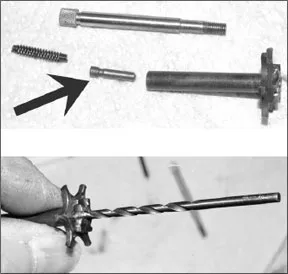
the fact that we had to do it. As the gun was, we could not recommend it; but we found a fix so easy that we recommend any owner of this gun go through the simple steps we took to ensure the gun will function all the time. Our 10-minute repair made the gun into one of the nicest short-barrel .357s weve seen or handled. In the fixed condition wed easily give this gun an A, and the price for the gun was, we thought, very reasonable.
Rossi Model R46202
357 Mag., $377
Right away we noted the Rossi was not nearly as slick and smooth in its operations as the Taurus. Part of the problem may have been its construction of stainless steel, which commonly isnt as slick as normal steel and tends to gall. We at first thought the polished finish of the Rossi was nickel plate. A visit to the Rossi website (www.rossiusa.com) told us the truth. By contrast, the stainless version of the Taurus is matte finished, but in fact a nickel or polished stainless finish makes the gun appear large, especially in marginal light, and that might be a good psychological tool to your advantage some horrible day.
The polish was extremely well done, though it made the slight waviness of the surface metal noticeable, which might be
objectionable to some. Another complaint might be that the edges here and there were sharper than need be. This was most noticeable around the front end of the ejector-rod shroud, just below the muzzle. This could play hob with your holster over time, but its easy to fix with a file or appropriate abrasive. The same sharp edge was seen on the blued Taurus, but fixing it would mar the bluing.
The sighting surface of the top of the frame was matte finished, and the sights could be easily seen, or so we thought. When it came time to shoot the gun in overcast winter weather, we had trouble seeing the front sight, and had to blacken it. The serrated ramp didnt help much. Painting the front blade red or black would help a lot. The sight picture was excellent, about as good as that of the Taurus.
The hammer held the firing pin, just like on old Smith & Wesson revolvers. The hammer spur was a little larger and a lot sharper than that of the Taurus, making it easier to control. The thicker, fatter grips were relieved for speed-loader use and to clear a path for the empties. However, with these grips we felt the rap of the trigger guard on our second finger, especially with heavy loads, and that didnt happen with the Taurus. Neither the Rossi nor the Taurus would extract even .38 Special cases all the way. A brisk push would get most of them out most of the time. Both guns had chamfered chamber mouths, the Taurus having a bit better job of it.
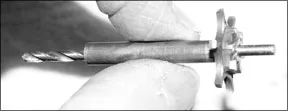
On the range we found the Rossi had similar accuracy to the other gun, but all shots landed about 3 inches left at 15 yards. We got five-shot groups on the order of 2 inches at 15 yards, and occasionally better. The Rossi gave its best group of just 1 inch with the hot .357 Federal 158-grain Hydra-Shok ammunition. Wefound the bigger, wider grips were slightly more comfortable on the palm than those on the Taurus with the hottest ammo, though as noted our second finger got rapped. Some of the punishment came from side blast at the cylinder gap. This was similar with both guns when shooting the .357 Mag ammo, but the blast was not bad with .38 Special loads.





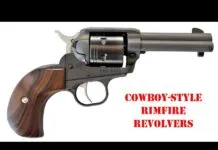

























Have a Rossi 3 inch 357 mag. ten yrs. now. Never had problem with this beautiful revolve! A real hand cannon! The only complaint that it absolutely scares the Hell outta my Doberman & Plott Hound! Very accurate! 38 Spl. ís best for the wife.
What’s the price on the 357